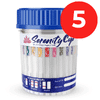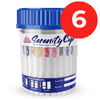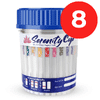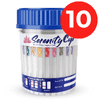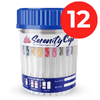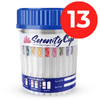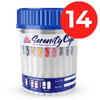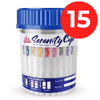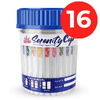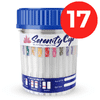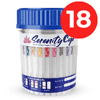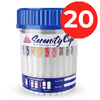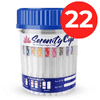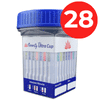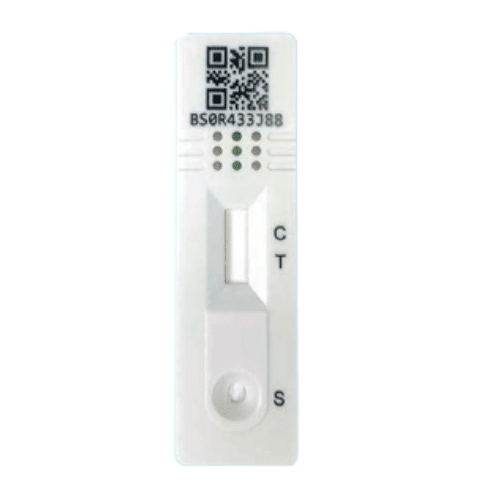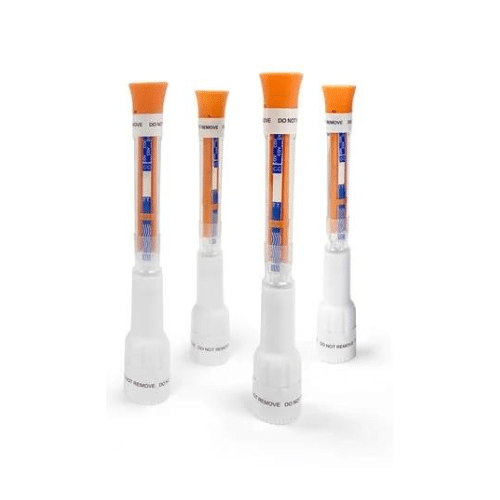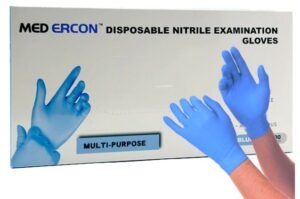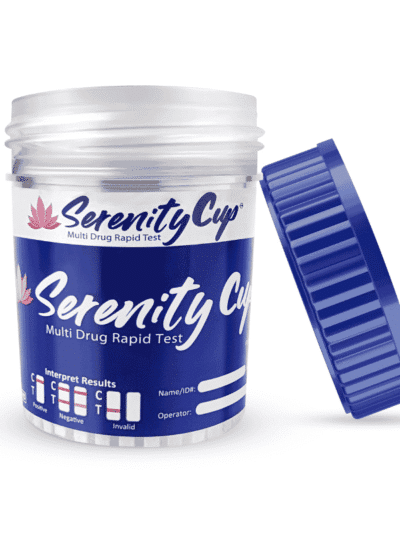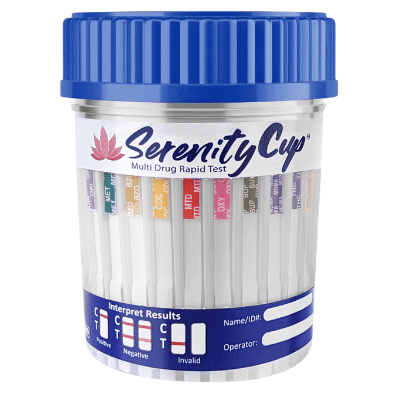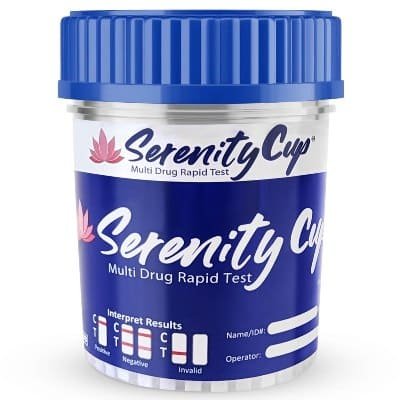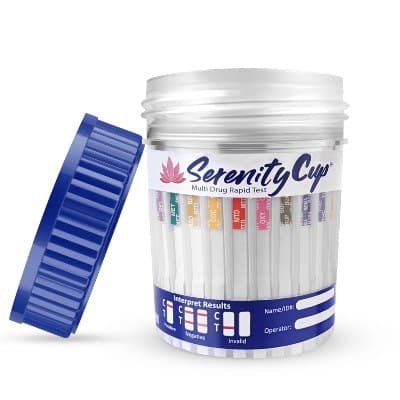13 Panel Drug Test Cups
Get accurate and reliable test results with the 13 Panel Drug Test Cup within five minutes. The 13-panel urine drug screen device detects drug levels through comprehensive urine analysis. The results are 99% accurate, and the device is suitable for home use, workplace detection, rehabilitation services, and any environment that demands drug tests in bulk.
The Drug Profile
The fentanyl drug test is used to detect 13 different illicit and legal drugs. The specimen analysis can also reveal the consumption of any drug combination quickly. The drug profile of the multi-drug rapid test cup includes the following.
- Amphetamine (AMP)
- Methamphetamine (MET)
- Benzodiazepines (BZO)
- Cocaine (COC)
- Oxycodone (OXY)
- Buprenorphine (BUP)
- Ecstasy (MDMA)
- Cannabinoid (THC)
- Barbiturates (BAR)
- Morphine (OPI)
- Tricyclic Antidepressant (TCA)
- Fentanyl (FYL)
- Methadone (MTD)
How to Use the 13 Panel Drug Screen Test?
The bulk drug test uses the urine specimen of the donor. Urine from the donor is collected at any time in a day. The in-built temperature strip confirms specimen temperature. The temperature strip also ensures that the specimen is 100% natural.
Follow the below steps after the testing cup is removed from the sealed pack.
Step 1: The donor places the specimen in the urine drug test cup and closes the cap tightly. The timer is switched on after the cap has been screwed.
Step 2: The details (date and initials of the donor) are written on the security seal label and placed outside the drug test pee cup.
Step 3: The temperature strip is checked within 4 minutes from the specimen collection time. The temperature of the urine must ideally be between 90–100-degree Fahrenheit.
Step 4: View the result area after five minutes. The results are not considered valid after a 10-minute time-lapse.
Step 5: The presence and absence of the colored bands in the result area are observed. The presence of one colored band indicates a positive result. In other words, if one colored band appears, then the level of the drug is above the permissible limit. The presence of two-colored bands indicates a negative result.
Step 6: Positive results can be reconfirmed if needed. The drug screen cups are disposed of with adherence to the applicable rules and regulations.
Key Features
- As the name suggests, the device includes 13 panels inside.
- The device includes a built-in temperature strip.
- It also includes hygienic drug testing cups.
- It is designed for easy use.
- The device is 100% leak resistance, thus making it hygienic for the donor and the person conducting the evaluation.
- The urine drug test cup includes non-drip screw tops for making the procedure neat and hygienic.
- The device includes two types of test strips: Fentanyl test strips and ETG test strips. Both strips are made in adherence to the exact cut-off level.
- It also includes three adulteration test strips to ensure no false-negative results.
Benefits of Choosing the 13 Panel Drug Test Cup
- You may detect multiple substances with just one 13 panel drug test.
- The product has an excellent shelf-life.
- The testing mechanism is straightforward.
- The customer care team is open to assisting users always.
- Testing cups work accurately and quickly.
- The drug test cups are very affordable and can be obtained in bulk.
- It is suitable for home as well as clinical use.
12panel now offers 13 panel drug screen cups in bulk quantities. Glance through the 12panelnow reviews before you choose to buy drug tests in bulk.
13 Panel Drug Test Cup from 12 Panel Now
When it comes to comprehensive drug testing solutions, 12 Panel Now leads the way with its superior 13 panel drug test cups. These cups are designed to provide fast, reliable and expansive drug screening, making them the preferred choice for many.
Wide-Ranging Drug Screening: 13 Panel Drug Test
Our 13 panel drug test offers a broad-spectrum drug screening solution in a single step. The 13 panel drug test cup screens for thirteen different substances at once, offering a thorough drug screening solution that is suitable for various needs.
Quick Results: 13 Panel Urine Drug Test
Speed and accuracy are key when it comes to drug testing. That’s why our 13 panel urine drug test is designed to provide results within minutes. This 13 panel urine test is simple to administer, and the results are reliable, ensuring you can trust the outcome.
Comprehensive Screening: 13 Panel Urine Drug Screen
The 13 panel urine drug screen offers a wider range of detection than many other drug tests. This makes it an excellent choice for situations where comprehensive drug screening is required. With our 13 panel drug screen, you can be confident in the comprehensiveness and accuracy of your drug screening process.
13 Panel Drug Test Near Me
Are you in search of a 13 panel drug test near me? Look no further than 12 Panel Now. We have a wide variety of drug tests for sale, including our precise and reliable 13 panel drug test cups.
12 Panel Now: Your Trusted Source for Drug Test Supplies
Being a pioneer in the wholesale drug test market, 12 Panel Now is committed to offering top-notch drug testing supplies. Whether your requirement is a standard cup drug test, an 18 multi drug test cup, or a swift drug test kit, we’ve got all your needs covered.
Our unwavering dedication to excellence, coupled with our broad spectrum of drug test cups, establishes us as a forerunner in the drug testing industry. Opt for 12 Panel Now for all your drug testing necessities and observe the distinctiveness that our superior quality and committed service bring.
Order Today
12 Panel Now offers comprehensive and reliable drug tests. Our 13 panel drug test cups are designed to deliver accurate and fast results, making drug testing easier and more efficient. Whether you’re a business seeking a comprehensive drug screening solution, a healthcare professional in need of reliable testing options, or an individual looking for an easy-to-use at home testing kit, our 13 panel drug tests are an excellent choice. Contact us today and trust in the quality, reliability, and superior customer service of 12 Panel Now.


